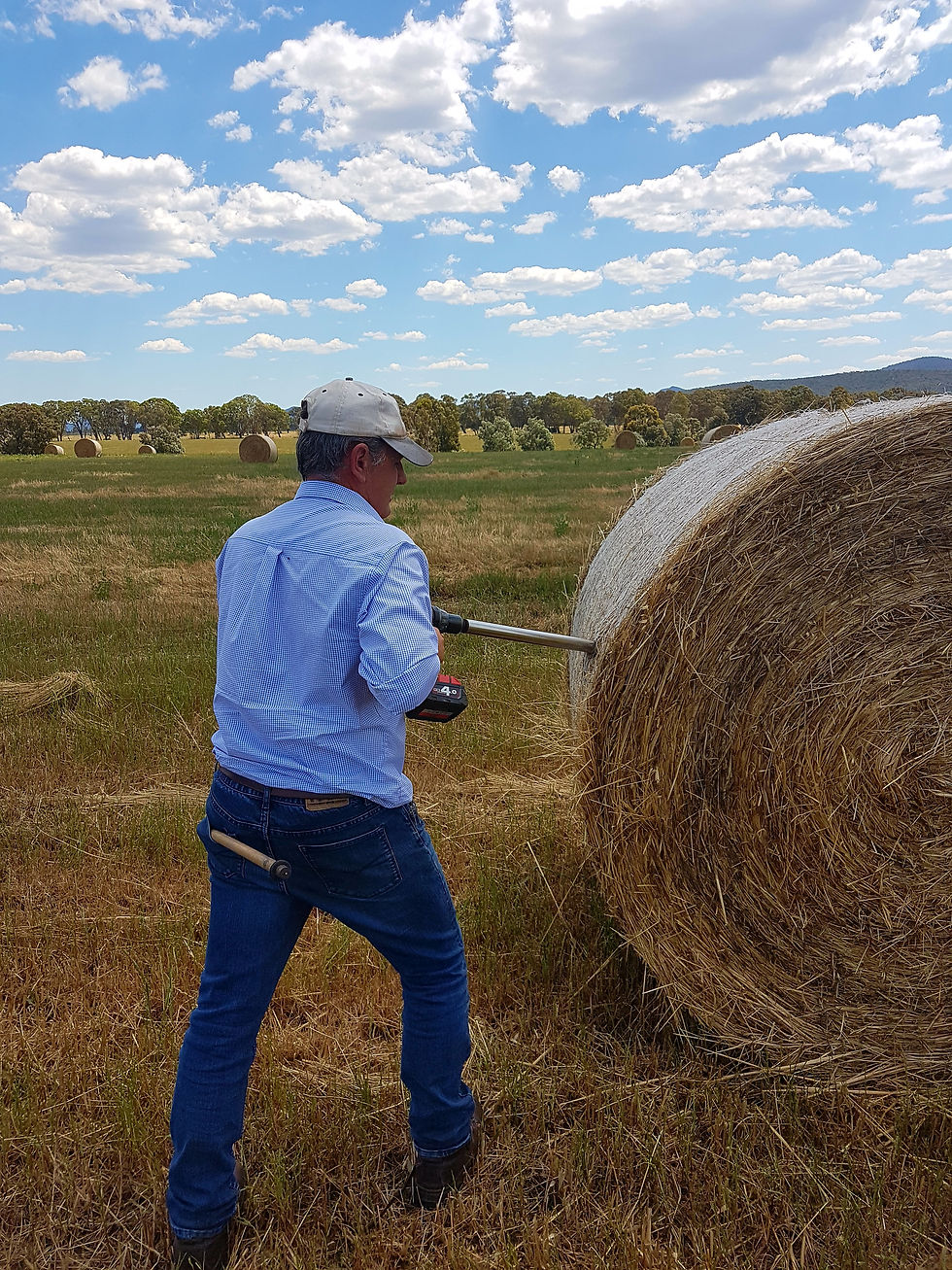Mould & Yeast in Forages
- Mikaela Baker

- Aug 17, 2020
- 3 min read
Updated: Aug 19, 2020

Our minds are very much still on grass and it feels too early to think about conserved forages, but while we have time it is worth discussing the value of a mould and yeast analyses.
Earlier this year on the 16th of April 2020, Feedworks Australia sent out some information on Moulds and Yeasts in forages, so we have summarised the information and have provided a small checklist to go over when looking to utilise feeds that may be just out of our preferred range.
This last season we have seen some exceptionally high mould counts over 1,000,000 CFU, the threshold of “do not feed”, is 5,000,000. These feeds tested great and looked to be high quality on a standard nutritional analysis, but with knowledge of their baling process being interrupted with rain, a mould and yeast count showed numbers we weren’t prepared for.
Moulds and yeasts are present in almost all foods, but it is the type and amount that can be the issue. Ruminants are excellent animals with the ability to handle standard moulds, yeasts and mycotoxins to a certain threshold without any negative impacts, but like everything there is a limit.
Have you ever had seasons where animals did not grow as you had expected, even with a good feed test? Or maybe not as many animals became pregnant you had expected, or not as many lambs or calves hit the ground compared to your pregnancy test rate – when you have done all the checks and everything seems like it should be good and normal, sometimes it can be the mycotoxins impacting animal production and health, and wearing down the immune system.
The old wives tail that white mould is safe is not always accurate, colour can be a guide to help identify a problem but will not indicate the level of problem or specific toxin produced.
A guide below can shed some light on different types of mycotoxins produced and if it is necessary, doing an identification analysis in the USA can confirm the type of problem.

With a simple mould count there will also be an indication of yeast. Yeasts are not necessarily harmful, they can decrease dry matter intake but they indicate aerobic spoilage and likely problems to follow. You can generally follow the mould guidelines for yeast counts, as you may see a test with only 1,000,000 CFU for mould but 14,000,000 for yeast, look at ways to mitigate risk and expect there to be further increase in spoilage.
When deciding how to manage moulds and yeasts in your feed, it is better to be aware as ignorance may not be bliss if you find lower than expected conceptions! As mentioned earlier, ruminants are excellent at handling low levels of toxins, however each mob or group of animals may handle the problem differently and you may see clinical signs in some animals at lower counts.
A general guide on mould count levels:

Depending on where your count sits, there are ways we can often still utilise the feed:
Dilution is key – the risk will be reduced if the animals are eating less of the problem.
Do a risk assessment on the group you are choosing to feed, if they are rams being prepared for joining, joining animals or animals actively giving birth, choose a lower risk group.
If you need to feed the forage (or grain) and are concerned about the impacts or seeing clinical signs, there are mycotoxin inhibitors that can be fed with grain or with loose lick minerals.
A mould and yeast count will take 5-7 days from receival in Bendigo, however an identification will take up to four weeks. Take a sample as normal for a feed analysis preferably with a corer, place in a plastic zip-loc bag clearly labelled and do not freeze. Post with your submission form via express post.
For more information on the effects of Mould & Yeast in your conserved fodder, contact your local TRAC Expert.
Our Consultants
EXPERTS IN RUMINANT PRODUCTIVITY
Mark Facy
0427 243 320
Owen Rees
0429 437 823
Mikaela Baker
0457 243 319
To download a copy of this article, please click the link below...




Comments